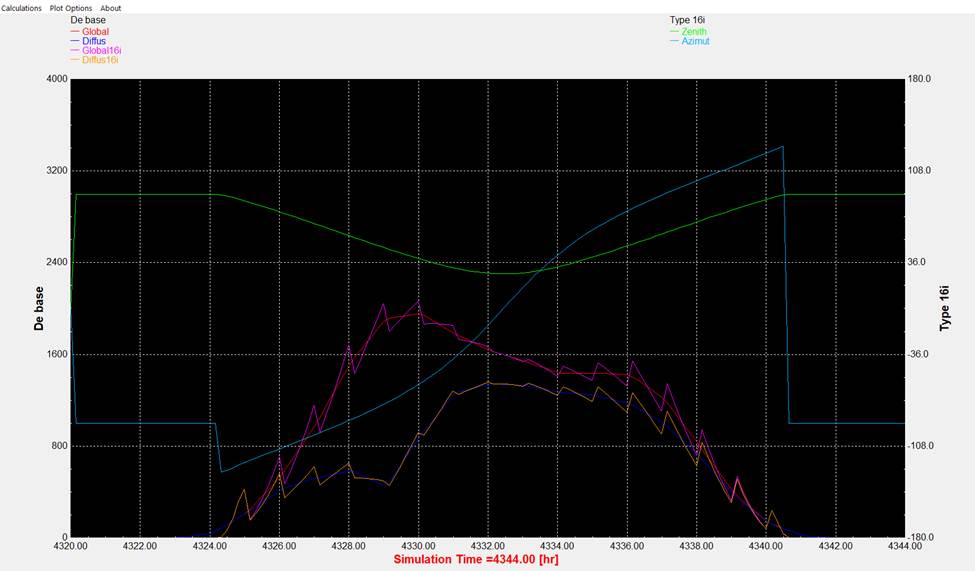Envoyé : jeudi 12 mai 2022 19:00
À : TRNSYS users mailing list at OneBuilding.org <trnsys-users@lists.onebuilding.org>
Cc : David BRADLEY <d.bradley@tess-inc.com>
Objet : Re: [TRNSYS-users] Basic help about Type16i
Nicolas,
To follow on what Jeff said, make sure that the values that are in your data file are totals for each hour (not instantaneous values measured at some point in the hour) and also make sure that your Type9 is NOT interpolating the data; Type9 does a linear interpolation while Type16 does an interpolation that is appropriate for solar radiation profiles. If Type9 is set to interpolate then a double interpolation is being done.
best,
David
Hello,
I got no answer so far.
I check other models and I guess know that it's not a mistake of mine but something inherent to Type16.
Is there any improvement available (in TRNSYS 17 or 18)?
Thanks
Kind regards,
Nicolas, from Belgium
From: TRNSYS-users trnsys-users-bounces@lists.onebuilding.org On Behalf Of Nicolas Heijmans via TRNSYS-users
Sent: mercredi 4 mai 2022 13:00
To: trnsys-users@lists.onebuilding.org
Cc: Nicolas Heijmans <nicolas.heijmans@bbri.be>
Subject: [TRNSYS-users] Basic help about Type16i
Hello everyone,
I've a problem when using Type 16i with TRNSYS17.
I read hourly data, but I want to perform 10 minutes calculations. When I calculate the solar radiation, Type16i gives me those strange zig-zag curves (pink and orange). I really don't know what I'm doing wrong. Can you help me?
Thanks in advance,
Kind regards,
Nicolas, from Belgium
_______________________________________________ TRNSYS-users mailing list TRNSYS-users@lists.onebuilding.org http://lists.onebuilding.org/listinfo.cgi/trnsys-users-onebuilding.org
-- *************************** David BRADLEY Principal Thermal Energy System Specialists, LLC 3 North Pinckney Street - suite 202 Madison, WI 53703 USA P:+1.608.274.2577 d.bradley@tess-inc.com http://www.tess-inc.com http://www.trnsys.com
